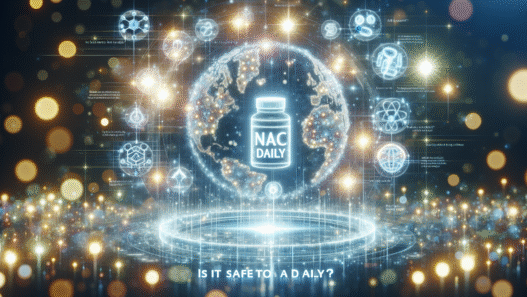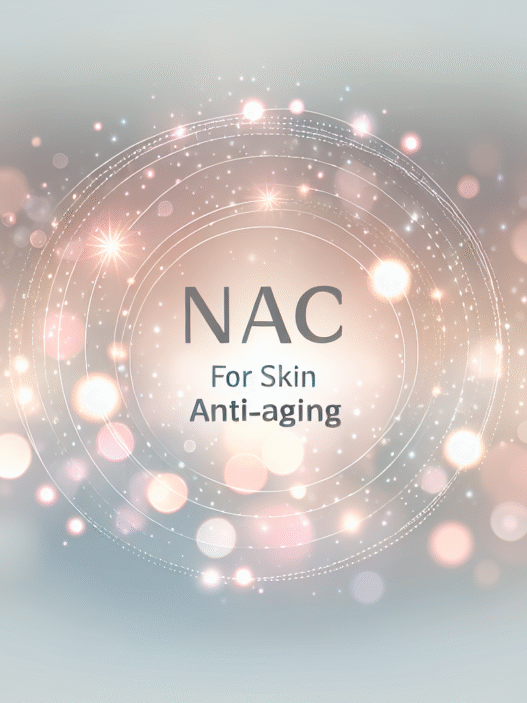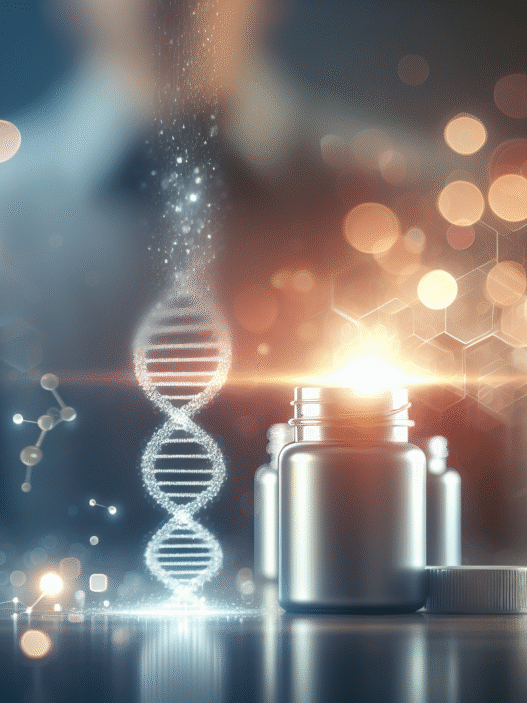Understanding N-Acetyl Cysteine (NAC)
N-Acetyl Cysteine (NAC) is a powerful compound with significant implications for health and wellness. It plays a crucial role in replenishing and maintaining glutathione levels in the body, which is essential for neutralizing free radicals and protecting against environmental damage (City Skin Clinic). This makes NAC a valuable addition to skincare, particularly for individuals concerned about aging, skin health, and overall vitality.
Role in Body’s Antioxidant Defense
NAC primarily functions by increasing the intracellular concentration of glutathione (GSH), a vital antioxidant that helps manage cellular redox balance. By doing so, NAC aids in the suppression of pro-inflammatory cytokines, such as tumor necrosis factor-alpha (TNF-α) and interleukins (IL-6 and IL-1β). This action is largely mediated through the regulation of nuclear factor kappa B (NF-κB), which is a key player in inflammatory responses (PubMed Central).
The increase in glutathione levels not only boosts the body’s antioxidant defense but also supports detoxification processes. This is particularly important for people concerned about liver health or seeking longevity.
The following table summarizes the key components of NAC’s antioxidant effects:
| Component | Description |
|---|---|
| Role in Antioxidant Defense | Replenishes glutathione levels |
| Suppresses Inflammation | Targets cytokines like TNF-α, IL-6, IL-1β |
| Regulates Cellular Redox | Balances redox states, protecting against oxidative stress |
Recognizing these properties can enhance understanding of how NAC can be effectively incorporated into skincare routines, particularly for its benefits related to nac for skin care and overall health improvement. Its well-established safety profile further supports its use in complementary health strategies, including in products aimed at combating signs of aging, such as wrinkles and loss of skin elasticity.
For those interested in the broader scope of NAC benefits, a deeper dive into n-acetyl cysteine benefits reveals its efficacy in promoting skin rejuvenation and health.
Benefits of NAC for Skin
N-Acetyl Cysteine (NAC) is increasingly recognized for its impressive benefits for skin health. This section will focus on how NAC enhances the skin’s protective abilities and supports skin repair.
Enhancing Skin’s Protective Abilities
NAC works to strengthen and reinforce the skin’s protective mechanisms by supporting the production of glutathione, a powerful antioxidant. This crucial antioxidant protects cells from oxidative damage caused by environmental aggressors such as UV exposure and pollution (City Skin Clinic).
By enhancing the skin’s natural defenses, NAC contributes to a smoother, brighter, and more youthful complexion. Consistent use can amplify the effectiveness of existing skincare products, leading to improved overall skin health. For those interested in exploring its application further, refer to n-acetyl cysteine for skin.
| Mechanism of Action | Benefits |
|---|---|
| Supports glutathione production | Protects against oxidative stress |
| Enhances skin barrier function | Reduces the impact of environmental damage |
| Amplifies other skincare ingredients | Improves overall skin texture and hydration |
Supporting Skin Repair
In addition to its protective abilities, NAC plays a significant role in supporting skin repair. It has demonstrated benefits in wound healing and increasing angiogenesis rates, which is crucial for the formation of new blood vessels (PubMed Central). This can significantly help individuals dealing with skin injuries or conditions that impede healing.
Topical applications of NAC also interrupt the UV signaling cascade, which is linked to photoaging, making it an excellent ally in the fight against premature skin aging (PubMed Central). With consistent use, individuals may notice a marked improvement in skin repair processes, leading to rejuvenation and enhanced skin vitality.
| Repair Mechanism | Effects |
|---|---|
| Promotes wound healing | Speeds up recovery of skin injuries |
| Increases angiogenesis | Ensures better blood flow and nourishment to the skin |
| Reduces photoaging | Minimizes the signs of aging caused by UV exposure |
NAC’s benefits extend beyond mere antioxidant properties, making it a valuable ingredient in the quest for healthy, youthful skin. For additional information, explore n-acetyl cysteine benefits and the nac supplement benefits.
Application of NAC in Skincare
N-Acetyl Cysteine (NAC) has garnered attention not only for its health benefits but also for its role as a valuable ingredient in skincare. Its multifunctional properties allow it to complement and enhance various skincare routines effectively.
Complementary Ingredient in Skincare Routines
NAC is considered a versatile ingredient that can enhance the skin’s repair and protective mechanisms. When included in a skincare routine, NAC supports the overall health of the skin by improving hydration levels and promoting a more even complexion. It is especially beneficial for individuals looking to improve skin elasticity and reduce the appearance of fine lines.
| Benefit | Description |
|---|---|
| Hydration | Helps maintain moisture levels in the skin. |
| Repair Support | Aids in the skin’s natural repair processes. |
| Protection | Strengthens the skin’s defenses against environmental damage. |
According to City Skin Clinic, NAC works best when synergistically combined with other skincare ingredients rather than being used alone. By integrating NAC into daily skincare routines, individuals can optimize the efficacy of their products, leading to smoother, better-hydrated skin.
Synergistic Effects with Other Skincare Ingredients
The synergistic effects of NAC enhance the performance of various skincare ingredients. For instance, when used alongside antioxidants, NAC amplifies their protective benefits, providing users with a more robust shield against oxidative stress.
Some common skincare ingredients that work well with NAC include:
| Ingredient | Benefit |
|---|---|
| Vitamin C | Works synergistically to boost collagen production and improve skin tone. |
| Hyaluronic Acid | Enhances hydration and locks in moisture. |
| Retinol | Promotes cell turnover and reduces signs of aging. |
NAC’s role in supporting glutathione production further strengthens its efficacy. Glutathione acts as a powerful antioxidant that protects cells from oxidative damage caused by UV exposure and environmental pollutants (City Skin Clinic). Incorporating NAC into a skincare regimen can lead to notable improvements in skin texture and resilience, making it an essential addition for those concerned about skin health and anti-aging.
For more detailed information on NAC’s benefits for skin, consider checking our articles on n-acetyl cysteine for skin and nac for anti-aging.
Efficacy of NAC in Skin Conditions
N-Acetyl Cysteine (NAC) has garnered attention for its potential benefits in treating various skin conditions. Its role as an antioxidant and its ability to support skin health make it a valuable addition to skin care regimens.
Improving Symptoms in Various Dermatologic Conditions
NAC has demonstrated efficacy in addressing several dermatologic issues. Research indicates that it may help improve symptoms of conditions such as excoriation disorder (skin-picking), trichotillomania (hair-pulling), acne vulgaris, and atopic dermatitis. In a study regarding excoriation disorder, individuals taking 1,200-1,300 milligrams of NAC daily for three months reported fewer symptoms compared to those who did not use the supplement.
| Condition | NAC’s Effectiveness |
|---|---|
| Excoriation Disorder | Reduced symptoms reported |
| Trichotillomania | 56% improvement in hair-pulling symptoms |
| Acne Vulgaris | Efficacy observed in general treatment |
| Atopic Dermatitis | Beneficial effects noted |
| Type I Lamellar Ichthyosis | Symptoms improved |
| Bullous Morphea | Positive responses from research |
| Systemic Sclerosis | Impact on symptoms possibly beneficial |
| Xeroderma Pigmentosum | Treatment may be effective |
| Pseudoporphyria | Positive outcomes noted |
This diverse array of conditions illustrates NAC’s potential as an effective treatment option for individuals dealing with persistent skin issues. For more insights into its skin benefits, readers can refer to n-acetyl cysteine skin benefits.
Promoting Wound Healing and Angiogenesis
Another significant benefit of NAC is its capacity to improve wound healing and promote angiogenesis, the process by which new blood vessels form from existing ones. Studies show that NAC enhances wound healing and exhibits antimicrobial properties against various bacteria. These attributes make NAC a promising candidate for skincare products targeting wound care and recovery.
NAC’s impact on the skin’s healing processes includes the following benefits:
| Benefit | Description |
|---|---|
| Improved Wound Healing | Accelerates recovery time for cuts and abrasions |
| Increased Angiogenesis | Supports the formation of new blood vessels |
| Antimicrobial Effects | Protects against gram-positive and gram-negative bacteria |
Research has also reported protective effects against radiation-induced dermatitis and the ability to shield melanocytes from UV-induced oxidative stress. This highlights NAC’s broad potential for enhancing skin regeneration and overall health. For additional details, check out our article on nac for skin health.
Safety and Precautions of NAC
When considering the use of N-acetyl cysteine (NAC) for skin care, it is essential to understand its safety profile and any precautions that may need to be taken. NAC is generally regarded as mild and well-tolerated, but it does come with certain considerations for users, especially those with sensitivities.
Mild and Well-Tolerated Nature
N-acetyl cysteine is often well-tolerated in topical skin formulations. Its mild nature makes it a favorable choice for many individuals seeking its benefits for skin health. However, there are potential risks of irritation, dryness, and allergies, particularly for those with sensitive skin. Consultation with a dermatologist is advisable for anyone with severe sensitivities, chronic skin conditions, or allergies. This is especially important during pregnancy or breastfeeding, as skin reactions can be more pronounced (City Skin Clinic).
| Potential Side Effects | Description |
|---|---|
| Irritation | May occur in individuals with sensitive skin. |
| Dryness | Some users report dryness when applying NAC products. |
| Allergic Reaction | Individuals with allergies should proceed with caution. |
Considerations for Severe Sensitivities and Allergies
While NAC can offer various skin benefits, individuals with known severe sensitivities and allergies should approach its use with caution. It’s crucial to patch-test any new NAC-containing products before widespread application on the skin. If any adverse reactions occur, discontinuation of the product should be immediate. For those uncertain about their skin’s reaction to NAC, consulting with a healthcare professional can provide additional guidance on its use.
Those considering the inclusion of NAC in their skincare routine should also be aware of the benefits it can provide. To learn more about these advantages, refer to our article on n-acetyl cysteine benefits or discover how it fits into anti-aging skincare by exploring nac for anti-aging.
Pharmacokinetics and Administration of NAC
N-Acetyl Cysteine (NAC) offers diverse methods of administration, each influencing its bioavailability and therapeutic effects. Understanding these pharmacokinetic properties is essential for maximizing its benefits for health, particularly in skin care applications.
Oral, Intravenous, and Inhalation Methods
NAC can be administered through three primary routes: orally, intravenously, or by inhalation. Each method has specific characteristics regarding absorption and efficacy.
| Administration Method | Bioavailability | Max Plasma Concentration (Cmax) | Peak Time |
|---|---|---|---|
| Oral | <10% | Variable | 1 – 2 hours |
| Intravenous | High | 554 mg/L after 150 mg/kg | Fast, within minutes |
| Inhalation | Low to Moderate | Variable | Variable |
Oral administration of NAC leads to rapid intestinal absorption but has low bioavailability (<10%). This means only a small amount of the intact molecule reaches the plasma and target tissues (PubMed Central). Peak plasma concentration occurs about 1 to 2 hours post-administration.
Intravenously, NAC allows for rapid delivery, producing high concentrations in the bloodstream swiftly, which is crucial in acute situations, such as treating paracetamol overdose.
Inhalation of NAC is used primarily for respiratory conditions. The absorption and effectiveness can vary significantly based on formulation and delivery method.
Clearance Alterations in Liver and Renal Conditions
The clearance of NAC can be significantly altered in individuals with liver or renal conditions. In patients with severe liver injury, reduced clearance of NAC is often observed. Similarly, individuals with end-stage renal disease demonstrate much lower NAC clearance, resulting in prolonged systemic exposure, which can affect dosing considerations.
| Condition | Clearance Alteration | Half-Life |
|---|---|---|
| Healthy Individuals | Normal clearance | Standard half-life |
| Severe Liver Injury | Reduced clearance | Extended duration |
| End-Stage Renal Disease | 90% reduction in clearance | 13 times greater than healthy subjects |
During studies, it was noted that the total clearance of 600 mg of oral NAC in subjects with end-stage renal disease was reduced by 90%, leading to a half-life 13 times greater than that observed in healthy individuals (PubMed Central). This information is essential for healthcare providers in tailoring NAC dosages for individuals with compromised liver or renal function.
By considering these pharmacokinetic aspects, individuals can better understand how to effectively utilize NAC as part of their health and skin care routines. For further reading on its benefits in skin care, refer to our article on n-acetyl cysteine for skin.





















